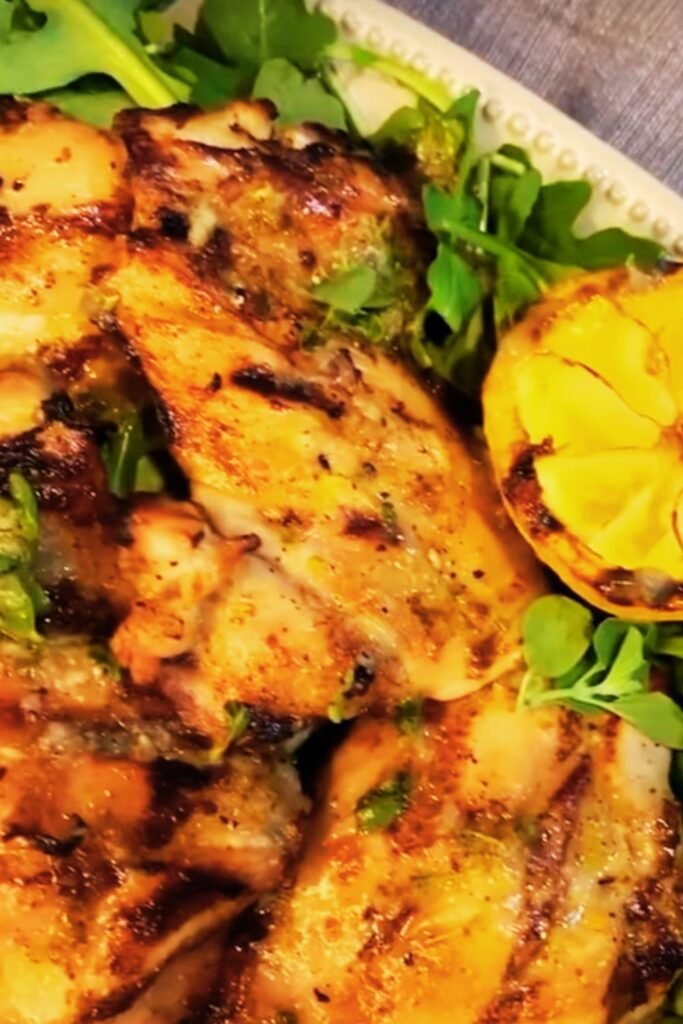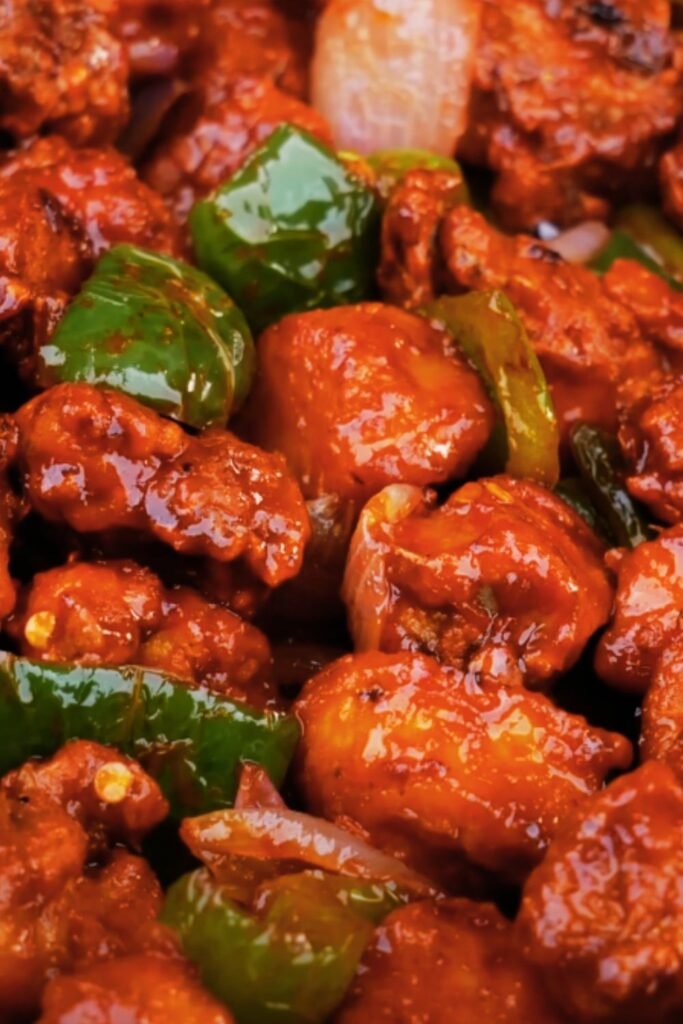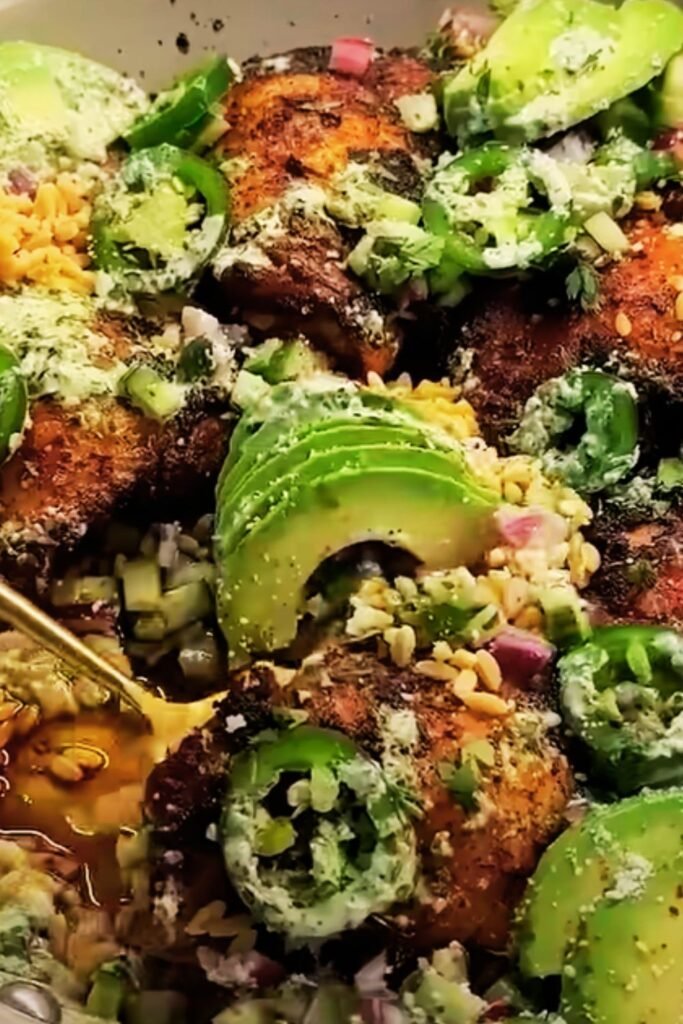There’s something magical about the combination of tender grilled chicken and the bright, herbaceous flavors of Italian salmoriglio sauce. I’ve been making this dish for years, and it never fails to impress both my family and dinner guests. This traditional Sicilian preparation transforms simple chicken into an extraordinary Mediterranean feast that captures the essence of summer in every bite.
Chicken Salmoriglio represents the perfect marriage of simplicity and sophistication. The dish showcases how a few quality ingredients, when combined thoughtfully, can create something truly spectacular. Today, I’m excited to share everything I know about this incredible recipe, from its fascinating origins to the techniques that will help you master it in your own kitchen.
What is Salmoriglio?
Salmoriglio is a traditional Italian sauce originating from Sicily, characterized by its vibrant combination of lemon juice, olive oil, garlic, and fresh herbs. The name itself comes from the Italian words “sale” (salt) and “origano” (oregano), highlighting two of its essential components.
Chicken Salmoriglio refers to grilled or roasted chicken served with this distinctive sauce, creating a dish that’s both rustic and refined.
Mediterranean cuisine encompasses the cooking styles of countries surrounding the Mediterranean Sea, emphasizing fresh ingredients, olive oil, herbs, and simple preparation methods.
Sicilian cooking represents a unique blend of Italian, Arab, Greek, and Spanish influences, resulting in bold flavors and aromatic combinations.
The beauty of salmoriglio lies in its versatility and the way it enhances rather than masks the natural flavors of the chicken. Unlike heavy cream-based sauces, salmoriglio provides a fresh, bright complement that makes the dish feel light yet satisfying.
The Origins and Cultural Significance
I find the history of salmoriglio absolutely fascinating. This sauce has been a staple of Sicilian cuisine for centuries, developed by fishermen and farmers who needed a way to enhance simple grilled proteins with ingredients readily available in their Mediterranean environment. The combination of lemon, olive oil, and herbs wasn’t just delicious – it was practical, providing both flavor and preservation qualities in the warm climate.
The sauce traditionally accompanied grilled fish, particularly swordfish, which remains popular in Sicily today. However, its application to chicken became widespread as the recipe traveled throughout southern Italy and beyond. What I love most about this dish is how it represents the Mediterranean philosophy of cooking: using the best ingredients available and treating them with respect and simplicity.
In my experience, the best salmoriglio comes from understanding this cultural context. It’s not about complexity or showing off – it’s about celebrating the natural flavors of quality ingredients through careful preparation and timing.

Essential Ingredients for Perfect Chicken Salmoriglio
Creating exceptional Chicken Salmoriglio starts with selecting the right ingredients. I’ve learned through years of experimentation that quality makes an enormous difference in the final result.
For the Chicken:
- 4 bone-in, skin-on chicken breasts (or 8 thighs for richer flavor)
- 2 tablespoons extra virgin olive oil
- 1 teaspoon sea salt
- 1/2 teaspoon freshly ground black pepper
- 1 teaspoon dried oregano
For the Salmoriglio Sauce:
- 1/3 cup fresh lemon juice (about 2-3 lemons)
- 1/2 cup extra virgin olive oil
- 4 garlic cloves, minced
- 2 tablespoons fresh oregano (or 1 tablespoon dried)
- 2 tablespoons fresh parsley, chopped
- 1 teaspoon sea salt
- 1/2 teaspoon red pepper flakes (optional)
- Zest of 1 lemon
The key to authentic salmoriglio is using high-quality extra virgin olive oil. I always recommend using a fruity, robust oil that can stand up to the bright acidity of the lemon. The garlic should be fresh and minced finely to distribute evenly throughout the sauce.
Detailed Nutritional Information
Understanding the nutritional benefits of Chicken Salmoriglio helps me appreciate why this dish has remained popular for so long. It’s not just delicious – it’s also incredibly healthy.
| Nutrient | Per Serving (1 chicken breast with sauce) | % Daily Value |
|---|---|---|
| Calories | 385 | 19% |
| Protein | 42g | 84% |
| Total Fat | 22g | 28% |
| Saturated Fat | 4g | 20% |
| Carbohydrates | 3g | 1% |
| Fiber | 1g | 4% |
| Sugar | 1g | 2% |
| Sodium | 520mg | 23% |
| Vitamin C | 15mg | 17% |
| Iron | 1.2mg | 7% |
| Calcium | 25mg | 2% |
Health Benefits Breakdown
| Benefit Category | Specific Benefits | Key Components |
|---|---|---|
| Heart Health | Monounsaturated fats support cardiovascular health | Extra virgin olive oil |
| Immune Support | High vitamin C content boosts immunity | Fresh lemon juice |
| Anti-inflammatory | Natural compounds reduce inflammation | Garlic, oregano, olive oil |
| Protein Power | Complete amino acid profile for muscle health | Chicken breast |
| Antioxidant Rich | Fights free radicals and cellular damage | Herbs, lemon, olive oil |
The Mediterranean diet, of which this dish is a perfect example, has been extensively studied and linked to numerous health benefits, including reduced risk of heart disease, improved brain function, and increased longevity.
Step-by-Step Preparation Guide
I’ve refined my technique for Chicken Salmoriglio over many years, and I’m excited to share the method that consistently produces the best results.
Preparing the Chicken
- Remove chicken from refrigerator 30 minutes before cooking to bring to room temperature
- Pat chicken completely dry with paper towels – this is crucial for proper browning
- Season generously with salt, pepper, and oregano on both sides
- Drizzle with olive oil and rub to coat evenly
- Let rest for 15-20 minutes to allow seasoning to penetrate
Creating the Salmoriglio Sauce
The sauce is where the magic happens, and timing is everything. I always prepare it while the chicken is resting.
- Combine lemon juice and salt in a medium bowl, whisking until salt dissolves
- Add minced garlic and let sit for 5 minutes to mellow the harshness
- Slowly whisk in olive oil in a steady stream to create an emulsion
- Stir in herbs and lemon zest until well combined
- Taste and adjust seasoning as needed
- Set aside at room temperature – never refrigerate before serving

Cooking the Chicken
I prefer grilling for the authentic smoky flavor, but I’ve also perfected techniques for indoor cooking.
Grilling Method:
- Preheat grill to medium-high heat (400-450°F)
- Clean and oil grates to prevent sticking
- Place chicken skin-side down and cook for 6-8 minutes without moving
- Flip carefully and continue cooking for 6-10 minutes more
- Check internal temperature – it should reach 165°F
- Rest for 5 minutes before serving
Pan-Searing Method:
- Heat cast iron skillet over medium-high heat
- Add a thin layer of oil when pan is hot
- Place chicken skin-side down and cook undisturbed for 5-7 minutes
- Flip and transfer to 400°F oven for 10-15 minutes
- Check temperature and rest as above
Cooking Time and Temperature Guide
| Chicken Cut | Cooking Method | Temperature | Time | Internal Temp |
|---|---|---|---|---|
| Bone-in Breast | Grill | Medium-High | 12-16 minutes | 165°F |
| Boneless Breast | Grill | Medium-High | 8-12 minutes | 165°F |
| Thighs (Bone-in) | Grill | Medium | 16-20 minutes | 175°F |
| Whole Chicken | Roast | 425°F | 45-60 minutes | 165°F |
| Drumsticks | Grill | Medium | 18-22 minutes | 175°F |
Serving Suggestions and Accompaniments
The versatility of Chicken Salmoriglio makes it perfect for various occasions and serving styles. I’ve served this dish at casual family dinners and elegant dinner parties with equal success.
Traditional Accompaniments:
- Roasted potatoes with rosemary and garlic
- Grilled vegetables such as zucchini, eggplant, and bell peppers
- Simple arugula salad with lemon vinaigrette
- Crusty Italian bread for soaking up the sauce
- Risotto with fresh herbs
- Pasta salad with cherry tomatoes and fresh basil
Modern Serving Ideas:
- Over quinoa pilaf with Mediterranean vegetables
- With cauliflower rice for a low-carb option
- Alongside farro salad with roasted vegetables
- Over mixed greens for a lighter meal
- With grilled polenta for an authentic Italian touch
I particularly love serving this dish family-style, placing the chicken on a large platter and drizzling the salmoriglio generously over the top. The sauce pools beautifully, and everyone can help themselves to as much as they like.
Variations and Creative Adaptations
Over the years, I’ve experimented with numerous variations of the classic recipe, each bringing its own unique character to the dish.
Herb Variations:
- Fresh basil and mint for a sweeter, more aromatic profile
- Rosemary and thyme for an earthier, more robust flavor
- Sage and oregano for a traditional Italian combination
- Cilantro and parsley for a fresh, bright variation
Protein Alternatives:
- Fish: Swordfish, salmon, or sea bass work beautifully
- Pork: Grilled pork tenderloin or chops
- Lamb: Leg or shoulder cuts benefit from the bright sauce
- Vegetables: Grilled eggplant or portobello mushrooms for vegetarian options
Citrus Variations:
- Orange and lemon combination for added sweetness
- Lime juice for a more tropical flavor profile
- Grapefruit for a unique bitter-sweet element

Storage and Reheating Tips
Proper storage ensures that leftover Chicken Salmoriglio maintains its quality and flavor. I’ve learned these techniques through experience and occasional mistakes.
Storage Guidelines:
- Refrigerate cooked chicken within 2 hours of cooking
- Store sauce separately to maintain optimal texture
- Use within 3-4 days for best quality
- Freeze cooked chicken for up to 3 months (sauce doesn’t freeze well)
Reheating Methods:
- Oven: 350°F for 10-15 minutes, covered with foil
- Stovetop: Gentle reheating in a covered skillet with a splash of broth
- Microwave: Use 50% power to prevent drying out
- Fresh sauce: Always prepare new salmoriglio for leftover chicken
Troubleshooting Common Issues
Even experienced cooks encounter challenges with this dish. Here are solutions to the most common problems I’ve encountered and helped others solve.
Sauce Problems:
- Sauce separates: Whisk vigorously or use an immersion blender to re-emulsify
- Too acidic: Add a pinch of sugar or more olive oil to balance
- Garlic too strong: Let the sauce sit longer, or use roasted garlic instead
- Lacks flavor: Increase salt gradually and add fresh herbs
Chicken Issues:
- Dry chicken: Brine beforehand or don’t overcook; use a meat thermometer
- Uneven cooking: Pound to even thickness or butterfly thick pieces
- Sticking to grill: Ensure grates are clean and well-oiled; don’t move too early
- No crispy skin: Pat dry thoroughly and start skin-side down
Wine Pairing Suggestions
While I don’t include alcoholic beverages in my serving suggestions, I understand that many people enjoy pairing food with appropriate beverages. The bright, herbaceous flavors of Chicken Salmoriglio pair beautifully with various non-alcoholic options:
- Sparkling water with lemon and fresh herbs
- Iced herbal teas such as chamomile or mint
- Fresh lemonade with Mediterranean herbs
- Citrus-infused water with cucumber and basil
- Virgin mojitos with fresh mint and lime
Seasonal Adaptations
I love how this dish adapts to different seasons while maintaining its essential character. Each season brings opportunities to enhance the basic recipe with seasonal ingredients.
Spring Variations:
- Add fresh peas and baby artichokes to the serving platter
- Incorporate spring onions and fresh fennel into the sauce
- Serve with asparagus and new potatoes
Summer Celebrations:
- Grilled corn and tomato salad make perfect accompaniments
- Fresh stone fruits can be grilled alongside the chicken
- Cold cucumber soup provides a refreshing starter
Fall Adaptations:
- Roasted root vegetables complement the flavors beautifully
- Apple and fennel slaw offers a crisp contrast
- Warm grain salads with seasonal vegetables
Winter Warmth:
- Braised greens such as escarole or chard
- Roasted citrus segments added to the sauce
- Warm lentil salads for heartier accompaniment
Questions and Answers
Q: Can I make the salmoriglio sauce ahead of time? I recommend making salmoriglio sauce no more than 2-3 hours before serving. The fresh flavors are at their peak when the sauce is freshly made, and the herbs can become bitter if left too long. If you must make it earlier, store it at room temperature and give it a good whisk before serving.
Q: What’s the best way to ensure my chicken doesn’t dry out? The key to juicy chicken is not overcooking it. I always use a meat thermometer to check for an internal temperature of 165°F for breasts and 175°F for thighs. Also, letting the chicken rest for 5-10 minutes after cooking allows the juices to redistribute throughout the meat.
Q: Can I use dried herbs instead of fresh in the salmoriglio? While fresh herbs provide the best flavor, you can substitute dried herbs in a pinch. Use about one-third the amount of dried herbs compared to fresh. For example, if the recipe calls for 2 tablespoons of fresh oregano, use about 2 teaspoons of dried oregano.
Q: Is there a way to make this dish less acidic? If you find the sauce too acidic, you can balance it by adding a tiny pinch of sugar or honey, increasing the olive oil slightly, or reducing the lemon juice. Some people also like to add a small amount of grated Parmesan cheese to mellow the acidity.
Q: Can I use this sauce on other proteins? Absolutely! Salmoriglio is fantastic on grilled fish (especially swordfish or salmon), pork tenderloin, lamb, and even grilled vegetables. The bright, herbaceous flavors complement many different proteins beautifully.
Q: What should I do if my sauce separates? If your salmoriglio separates, don’t worry – this can happen, especially if the ingredients were at different temperatures. Simply whisk it vigorously by hand, or use an immersion blender for a few seconds to re-emulsify the sauce.
Q: How can I tell when my chicken is properly grilled? Besides using a meat thermometer, look for these visual cues: the juices should run clear when pierced with a knife, the meat should feel firm but not hard when pressed, and there should be no pink color in the thickest part of the meat.
Q: Can I marinate the chicken in the salmoriglio? I don’t recommend marinating chicken in the full salmoriglio sauce because the acid from the lemon juice can make the meat mushy if left too long. Instead, marinate the chicken in olive oil, garlic, and herbs, then prepare fresh salmoriglio for serving.
Q: What’s the difference between salmoriglio and chimichurri? While both are herb-based sauces, salmoriglio is Italian and typically uses oregano, parsley, lemon juice, and olive oil. Chimichurri is Argentinian and usually contains cilantro, parsley, garlic, vinegar, and olive oil. Salmoriglio tends to be more citrus-forward while chimichurri is more vinegar-based.
Q: Can I make this dish without a grill? Definitely! You can achieve excellent results using a grill pan, cast iron skillet, or even by roasting in the oven. The key is getting good browning on the chicken skin and cooking it to the proper internal temperature. Each method will give slightly different flavors, but all are delicious.
This incredible dish represents everything I love about Mediterranean cooking – simplicity, quality ingredients, and bold flavors that come together harmoniously. Whether you’re cooking for a weeknight family dinner or entertaining guests, Chicken Salmoriglio never fails to impress. The combination of perfectly cooked chicken with that bright, herbaceous sauce creates a meal that’s both satisfying and refreshing.
I encourage you to make this recipe your own by experimenting with different herb combinations and serving suggestions. The beauty of Chicken Salmoriglio lies in its versatility and the way it adapts to your personal preferences while maintaining its essential Mediterranean character. Once you master this dish, I guarantee it will become a regular part of your cooking repertoire, just as it has become an essential part of mine.